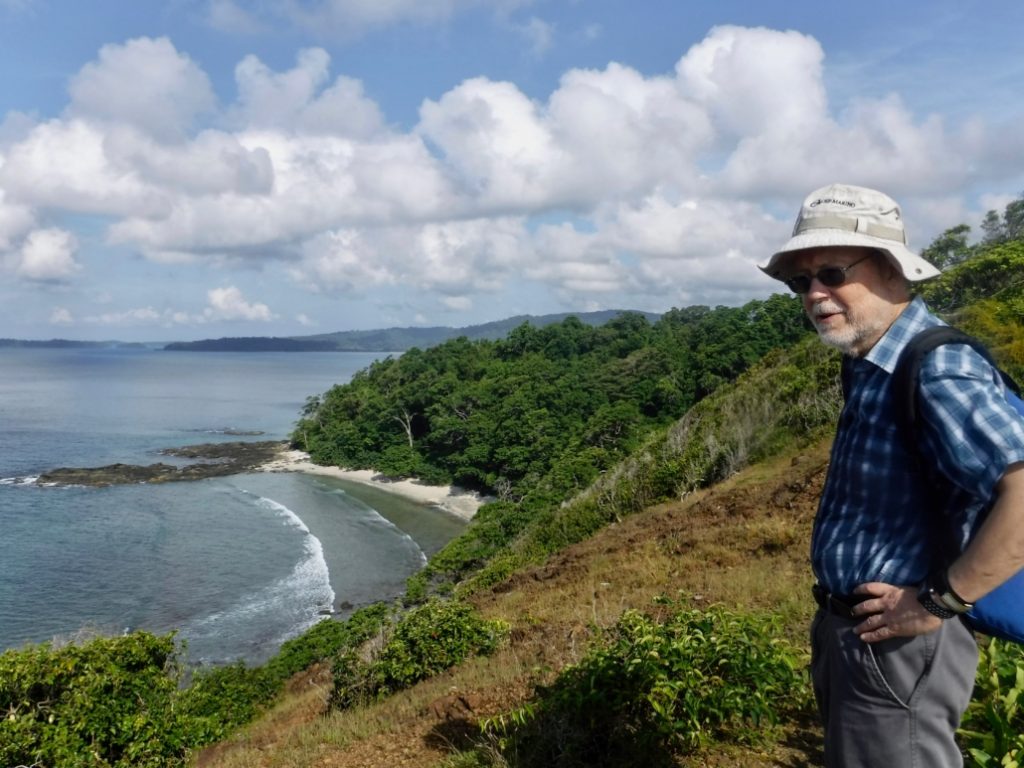Record Number of Candidate Immas Awarded in West Indian Ocean and Arabian Seas
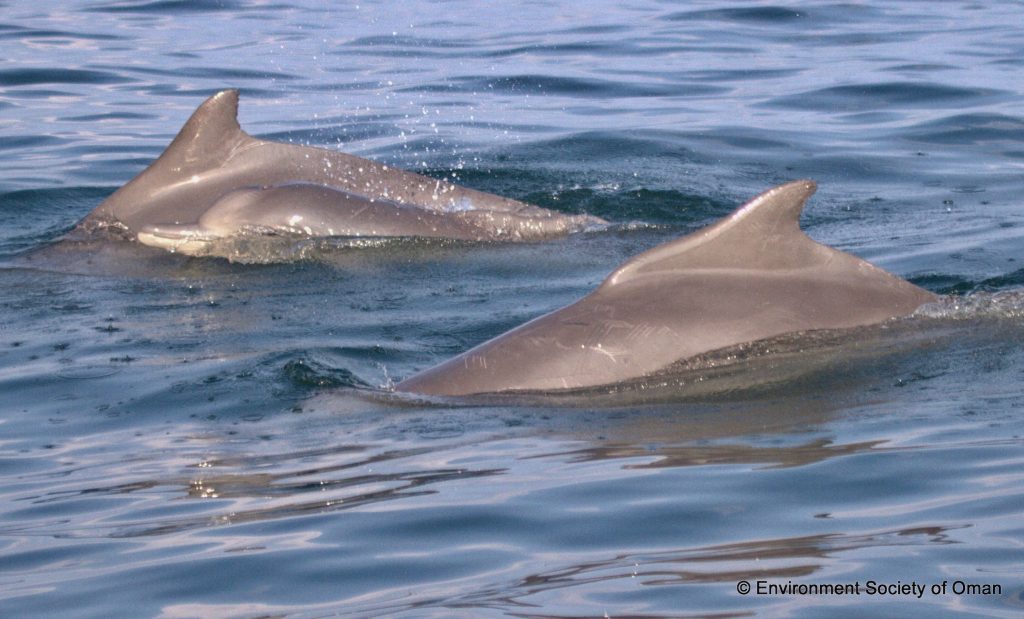
This week, 4-8 March 2019, the IUCN Marine Mammal Protected Areas Task Force (the “Task Force”) completed the fifth Important Marine Mammal Area workshop in Dhofar, in the southernmost governorate of Oman. The week-long workshop hosted 38 marine mammal scientists and observers from 15 countries to map the important habitats for marine mammals in the western Indian Ocean and Arabian Seas.
An extraordinary 55 candidate important marine mammal areas, or IMMAs, were identified, along with 13 areas of interest (AoI) which will be retained as potential future IMMAs pending further research.
One of the 55 areas identified as candidate IMMAs was right outside the hotel in Dhofar, off Salalah, where the group worked and where small groups of endangered Indian Ocean humpback dolphins could be seen swimming close to shore early in the mornings.
The Western Indian Ocean and Arabian Seas region is special. Besides the humpback dolphins, there are three endangered blue whale subpopulations, the rarest humpback whales in the world – the Arabian Sea humpback whale, and the largest numbers found of Omura’s whale, a cryptic 10m long tropical whale only recently identified as a species by scientists. The region is also home to the dugong, that persists in pockets along the coasts of East Africa and West Asia
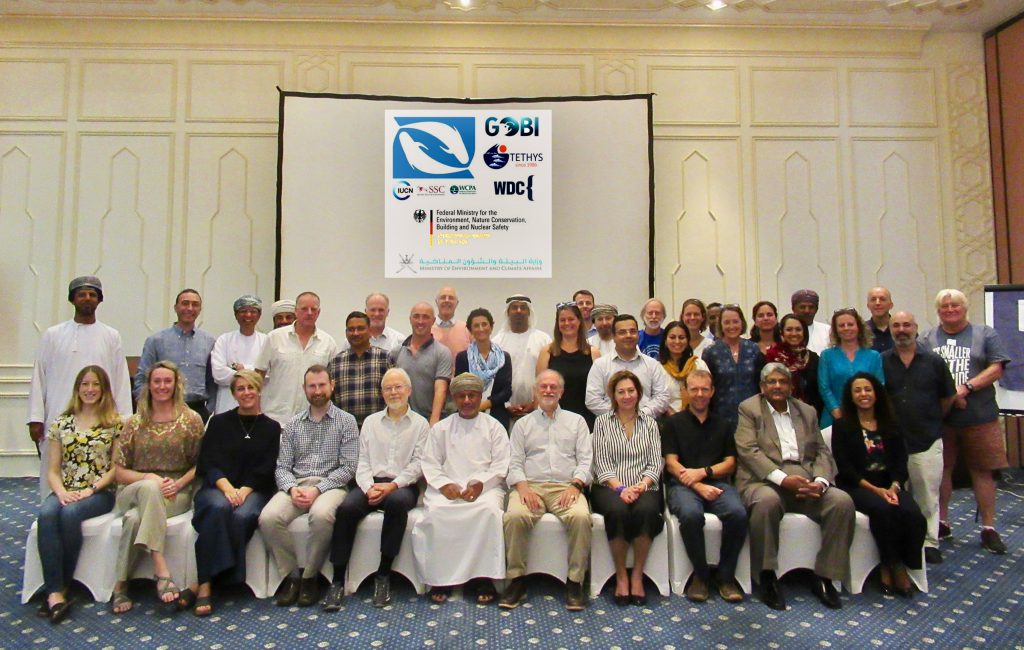
The Oman workshop follows successful Task Force IMMA regional workshops in the Mediterranean, Pacific Islands, Northeast Indian Ocean-Southeast Asian Seas and the Extended Southern Ocean in 2016-2018, but 55 candidate IMMAs is a record total to date for a single region. Sponsored by the Global Ocean Biodiversity Initiative through the German Government’s International Climate Initiative (GOBI-IKI), the Task Force has adopted as its mandate the mapping of habitats for the 130 species of marine mammals—cetaceans, pinnipeds, sirenians, otters and the polar bear—across the world ocean.
Important Marine Mammal Areas—IMMAs—are defined as discrete portions of habitat, important to marine mammal species. These areas have the potential to be delineated and managed for conservation. They are not marine protected areas but layers that can be used in spatial planning or for other area-based management tools.
The candidate IMMAs now go to an independent review panel. Once approved, they will be placed on the IMMA e-Atlas, and can be used for conservation planning. Those without sufficient evidence will remain as AoI. Final results from the panel are expected to be posted online later in 2019. The collective expertise, energy and commitment of the scientists, gathered in the inspirational setting of Dhofar have made this technical and scientific exercise a great success.
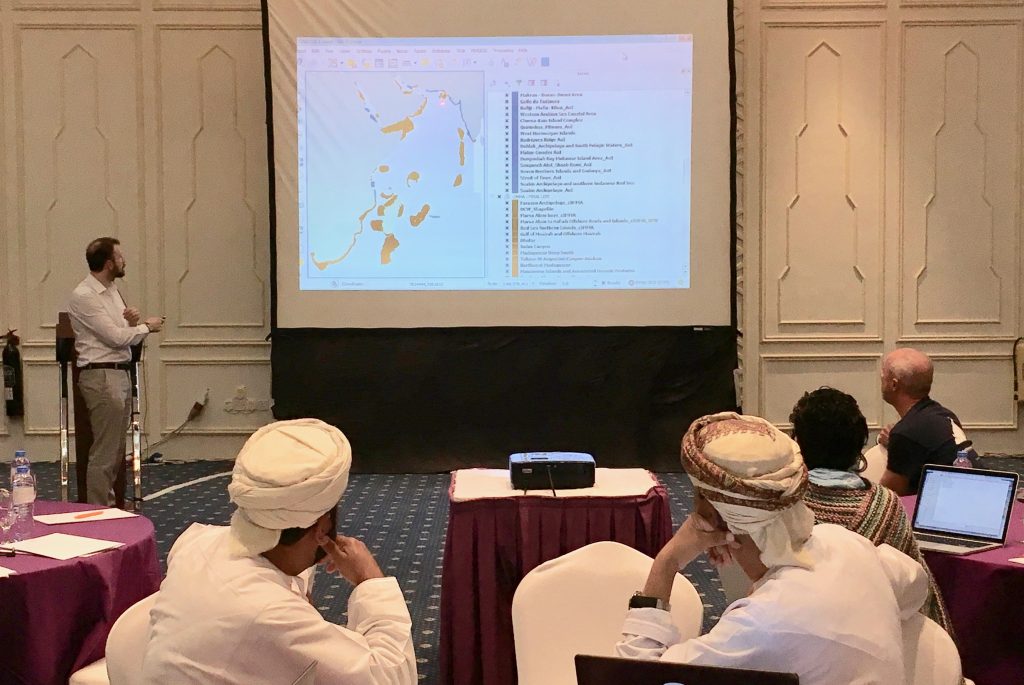
30 New Marine Mammal Habitats Awarded Status as Immas in the North East Indian Ocean and South East Asian Seas
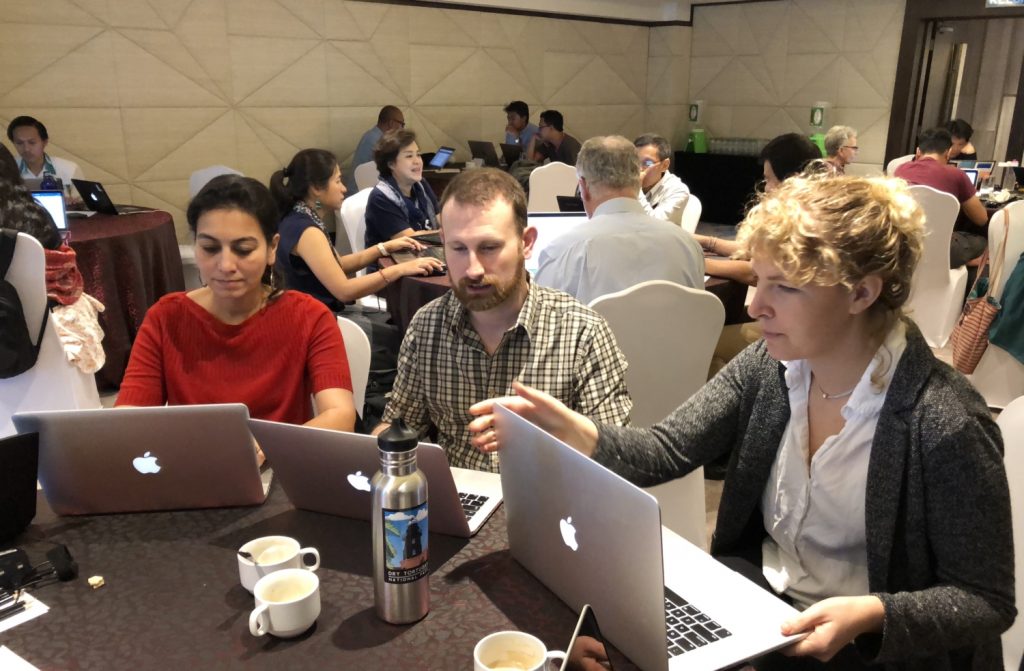
31st January 2019. The IUCN Marine Mammal Protected Areas Task Force today announces the approval of 30 new Important Marine Mammal Areas (IMMAs) in one of the most biodiverse areas of the world ocean—the North East Indian Ocean and South East Asian Seas Region. Having passed through the expert nomination and peer review process, these 30 IMMAs will now appear in the interactive map, an IMMA e-Atlas on the Task Force website.
IMMAs function as a layer highlighting important habitat for marine mammals useful for marine spatial planning or which may lead to ship or noise directives, and the creation, revision or expansion of marine protected areas (MPAs) and other area-based management tools. IMMAs function as valuable indicators of the health of the marine environment. They point to the location of marine biodiversity, and can be used to monitor climate change.
The new IMMAs cover habitats of the Coastal Northern Bay of Bengal off Bangladesh with one of the world’s healthiest populations of Irrawaddy dolphins as well as other dolphins and whales, to the Babuyan Marine Corridor in northern Philippines for breeding humpback whales, to eastern Indonesia and the Coral Triangle region for blue, Bryde’s and Omura’s whales, as well as spinner, pantropical and other tropical dolphins.
Besides the new IMMAs, seven additional areas will remain as candidate IMMAs (cIMMAs), pending further research, and 32 habitats will go on the map as areas of interest (AoI).
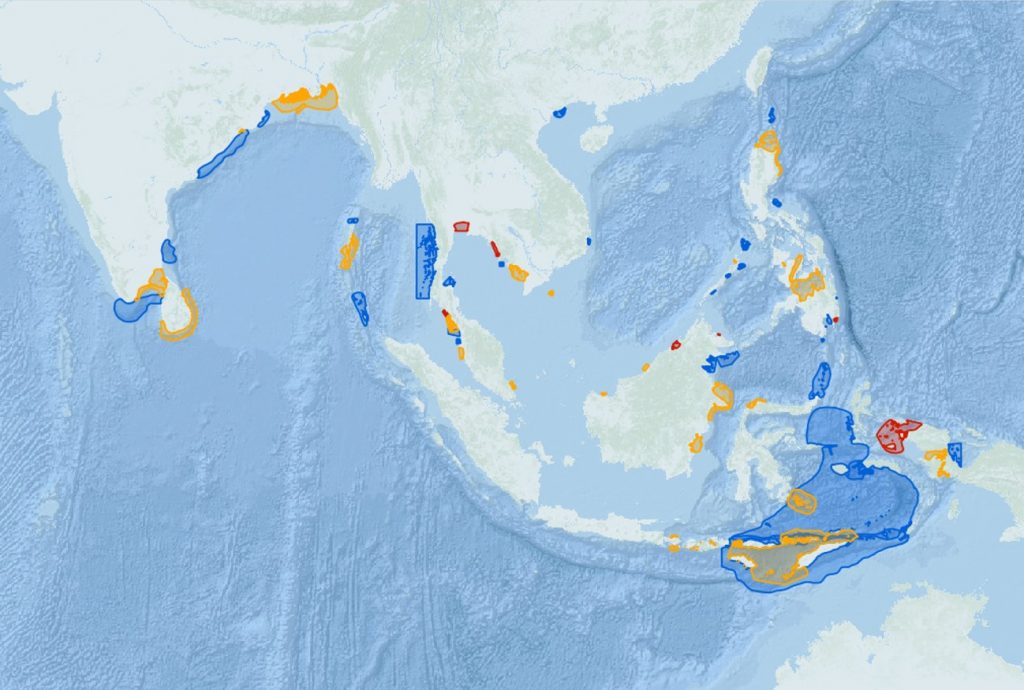
30 IMMAs (shown in yellow), 7 cIMMAs (red), and 32 AoI (blue) approved in the North East Indian Ocean and South East Asian Seas Region
The newly declared IMMAs were the result of an expert workshop held in Kota Kinabalu, Sabah, Malaysia in March 2018. Some 29 experts from 17 countries attended the week-long workshop. Later in 2018, in follow-up to that workshop to implement one of the identified North East Indian Ocean IMMAs, the Task Force assembled an expert team comprised of six Indian and four international experts. Together, they travelled to the Andaman Islands off India to devise a strategy for implementation of a dugong IMMA as well as a diverse cetacean AoI. The report is here.
Also in 2018, the Task Force negotiated the Southern Ocean IMMA Workshop, and the resulting 15 candidate IMMAs will shortly enter the review process. Next, the IMMA ship sails on across the Southern Hemisphere with Workshops delineating marine mammal habitats in the Western Indian Ocean and Arabian Seas (March 2019), Australia-New Zealand Waters and South East Indian Ocean (2020) and the South East Tropical and Temperate Pacific Ocean (2021).
The five IMMA southern hemisphere workshops (2017-2021) are sponsored as part of the Global Ocean Biodiversity Initiative through the German Government’s International Climate Initiative (GOBI-IKI). The other main supporters of the IMMA effort have been the the Mava Foundation (for the Mediterranean region) and the Agence Française pour la Biodiversité (AFB) through IUCN (for the Extended Southern Ocean). Other sponsors include the Tethys Research Institute, Whale and Dolphin Conservation (WDC), the International Committee on Marine Mammal Protected Areas and the Eulabor Institute. The preparation of IMMA criteria and establishing support for the IMMA concept was funded by Animal Welfare Institute, Pacific Life Foundation, the U.S. Marine Mammal Commission, Tethys and WDC, among others.
The final report of the North East Indian Ocean and South East Asian Seas IMMA Workshop is now available for download.
Putting the Southern Andamans Imma on the Road to Implementation
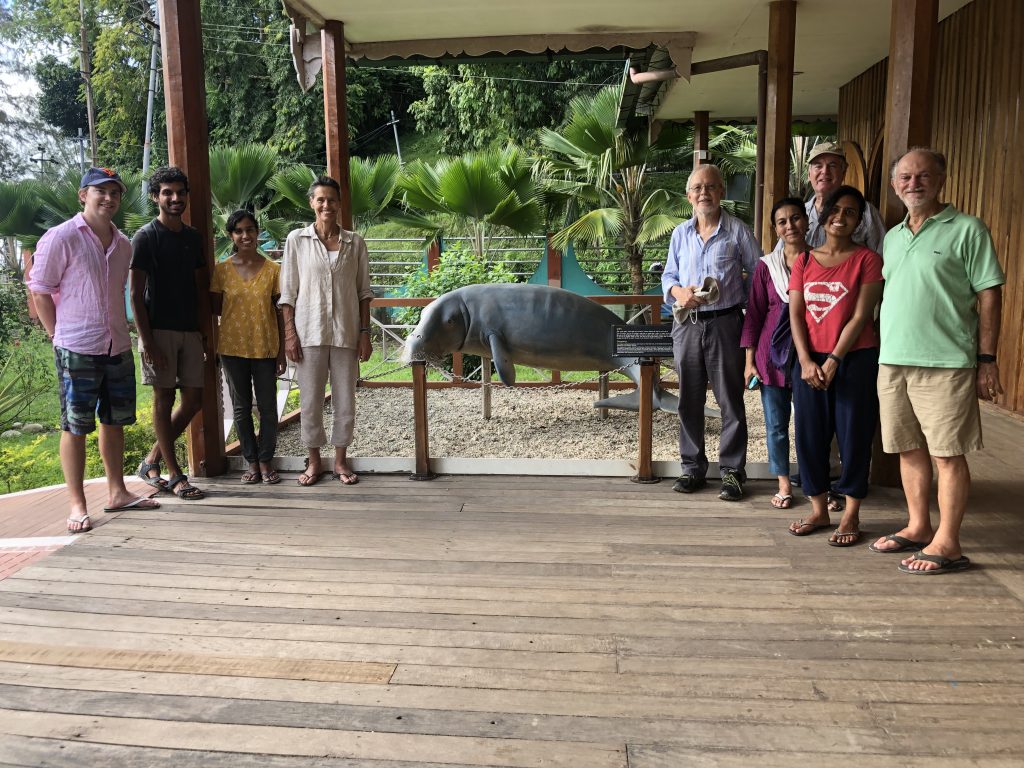
In November 2018, Task Force co-chairs Giuseppe Notarbartolo di Sciara and Erich Hoyt travelled to the Andaman and Nicobar Islands, India, in the Bay of Bengal, to work with Indian scientists and conservationists to implement a new Important Marine Mammal Area (IMMA).
The Andamans are notable for being pristine islands surrounded by waters with substantial marine mammal biodiversity, featuring at least 15 whale and dolphin species, including the rarely seen Omura’s whale. A small and highly endangered population of dugongs is found in inshore waters. Several of the islands are the homes of aboriginal groups that remain largely uncontacted. The Sentinelese from North Sentinel Island, as we saw in the news recently, do not welcome outside contact.
By contrast, the city of Port Blair, in the Andamans, has attracted settlement since the 1960s from India and other nearby countries and now has a population of over 100,000 people, representing almost half of the population in the archipelago. Only 38 of the 572 islands have a permanent human population.
Along with the growing population has come demands on the fishing industry as well as questions about how much and what kind of tourism can be promoted if the islands are to retain their appeal and remain sustainable. These contrasts of substantial settlement in the main city and pristine and little visited islands surrounded by marine biodiversity are part of the challenges of protecting marine mammal populations.
Last March at the IMMA workshop for the North East Indian Ocean and South East Asian Seas, Indian ecologists Dipani Sutaria, K. Sivakumar, Mahi Mankeshwar and Elrika D’Souza nominated the southern Andaman Islands area as an IMMA and also identified portions of the Nicobar Islands and the top of North Andaman island as dugong areas of interest (AoI). In October, an independent review panel approved the IMMA and recognized the value of the two AoI. In time, with further dedicated surveys, the AoI may well become IMMAs, too.
Besides Notarbartolo di Sciara and Hoyt, the visiting delegation included Jon Day from James Cook University and formerly of the Great Barrier Reef Marine Park and Tundi Agardy, a marine spatial planning and protected area specialist from the US. They were joined by the local IMMA team led by Sutaria as well as researchers Mahi Mankeshwar, Evan Nazareth, Aashi Parikh, Swapnali Gole (Wildlife Institute of India), and Elrika D’Souza (Nature Conservation Foundation).
The highlights of the week in the Andamans were hikes through the rain forest at M. Gandhi Marine Park and the southern tip of South Andaman with its lookout over the island passages and open Andaman Sea, a visit to Neil Island, meetings with the tourism director of the islands and coast guard, and a one-day stakeholders’ meeting organized by the local IMMA team with presentations from the IMMA team and Task Force delegation.
The stakeholders’ meeting to learn about the new IMMA provided the catalyst for bringing all the players to the table. A key outcome will be setting up a local consultative group to recommend best practices, raiseawareness and promote further research and monitoring toward a sustainable tourism industry.
The consultative group will now work with stakeholders to come up with an agenda to help implement the IMMA and AoI and thereby help ensure the future of marine mammals and the biodiversity that they help to support.
The five-year IMMA project in the Southern Hemisphere (2016-2021) is part of theGOBI/IKI Project, funded through the International Climate Initiative (IKI). The German Federal Ministry for the Environment, Nature Conservation, Building and Nuclear Safety (BMUB) supports this initiative on the basis of a decision adopted by the German Bundestag. Dedicated administrative and logistic support comes from the Tethys Research Institute and Whale and Dolphin Conservation.
